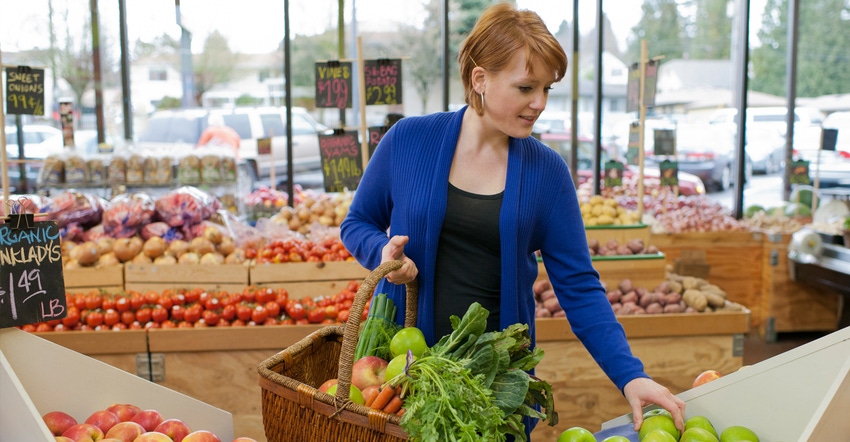July 16, 2020

COVID-19 has created concerns regarding our food supply. Over the past couple of months, agricultural producers and consumers alike have asked Michigan State University Extension specialists what will happen during the 2020 growing season.
The honest answer? “We don’t know,” say MSU experts with experience limited primarily to fresh fruit, vegetables and local market sales. Even though they can’t predict the future, here are their collective thoughts for the 2020 growing season.
Less summer travel
International and domestic long-distance travel will be reduced for the next six months or more, either by government action or voluntarily by safety-conscious consumers. Consumers still will travel, but they will be traveling locally. Day or weekend trips will most likely be the trend.
Priority on ‘buy local’
A visit to a roadside market or a farmers market will be part of many consumers’ short trips. It will be viewed as an event they can do relatively safely, since many festivals and concerts where there would have been large gatherings already have been canceled.
Related: Complete coronavirus coverage
Some growers are offering preorder and pickup from farm stands and farmers markets to further ease customer concerns. Producers selling locally and directly to consumers may see demand increase, while those marketing through brokers may see less or similar demand as previous years.
Expect to see increased interest and enrollment in Community Supported Agriculture. Those interested in CSAs can find a CSA near you.
Less consumer buying power
The speed at which the economy will recover is uncertain, but there is a good chance a significant portion of the workforce will be unemployed through the summer and fall months. Unemployed consumers will be looking for good ways to increase their food dollar buying power. Buying local and seasonal items could be part of their money-saving strategy.
Food pantries already have seen an increase in demand, which will continue for some time. Many producers are sending excess produce to these pantries and participate in the federally funded program to grow specifically for food pantries.
Increased interest in U-pick
U-pick began with farmers offering an outing to city dwellers, or farmers allowing gleaners to harvest crops missed or intentionally left during the regular harvest. The former were looking for entertainment, and the latter were looking for inexpensive food. Either case fits well into the COVID-19 situation.
If you are a frequent customer at U-pick operations, expect a more structured activity to ensure your food and you are safe.
Home food preservation
There are many reasons home food preserving is gaining in popularity. Some preserve food to save money, for food security or to have more control over ingredients and production practices. Whatever the reason, it is important to follow research-based, tested and food safe recipes and processes.
MSU Extension has developed an online food preservation course that instructs viewers on research-based methods for safely freezing, canning and drying foods at home. This low-cost online course is designed to increase knowledge and confidence in water bath and pressure canning, freezing, pickling, and dehydrating techniques.
Fewer dollars spent on dining out
An abrupt, extreme shift in food service occurred when dine-in restaurants, schools and universities closed. The average consumer probably does not grasp the enormity of this change. Since 2010, more than half of the family food budget has gone to eating outside the home with the average person eating out four to five times a week.
To have this sudden shift placed a tremendous burden on the established supply chain. What will happen as restrictions are lifted is hard to predict. There could be a big demand on restaurants as consumers strive to return to a more normal life. However, there still will be some amount of social distancing at least for the near future.
This will mean fewer tables, and many eat-in restaurants may not open until they can have full operation. The restaurant business relies on volume and quick turnover to make a profit, and operating below full capacity may not be possible for some.
The food service industry also is a big user of fresh product, especially vegetables. Depending on how quickly consumers return to restaurants, we may see a decrease in fresh fruit and vegetable demand and an increase in prepared or prepackaged fruits and vegetables.
Social distancing in confined areas may be in place for an extended period for identified high-risk groups, whether it’s self- or government-imposed. Those 65 and older and those with complicating health issues represent a significant amount of the population and a significant amount of buying power.
Many of these points are interrelated. How consumers' food purchasing and eating habits temporarily or permanently change will be interesting and important to observe.
Source: Michigan State University Extension, which is solely responsible for the information provided and is wholly owned by the source. Informa Business Media and all its subsidiaries are not responsible for any of the content contained in this information asset.
Read more about:
Covid 19You May Also Like




